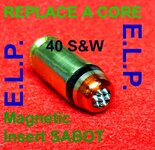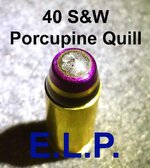- Messages
- 3,380
- Reactions
- 4,737
- Thread Starter
- #21
@Tilos I have read nothing about Titegroup for carbines. In the Lyman #49 it says, "Titegroup is not sensitive to powder position in a case. Hence, it is ideal for handgun loads which occupy only a small space in the case." I take that as why many shooters see TG as a good powder for down-loading to minor.
Just typing a search into Google does not provide published data. I'd like to see more published data, as is found in reloading manuals and such. I might very well end up going by a collection of information garnered by doing Google searches of the experiences of other shooters. But I can't trick myself into thinking that such information is as authoritative or safe as going to the letter of Lyman's data or Hodgdon's data or whatever.
For example, even though I think Federal primers would work well for my use, Lyman's #49 AND Hodgdon's online load data indicate Winchester small pistol primers. I might as well start there instead of forge my own path. I'm bound to do that inthe future with more experience of my very own.
Just typing a search into Google does not provide published data. I'd like to see more published data, as is found in reloading manuals and such. I might very well end up going by a collection of information garnered by doing Google searches of the experiences of other shooters. But I can't trick myself into thinking that such information is as authoritative or safe as going to the letter of Lyman's data or Hodgdon's data or whatever.
For example, even though I think Federal primers would work well for my use, Lyman's #49 AND Hodgdon's online load data indicate Winchester small pistol primers. I might as well start there instead of forge my own path. I'm bound to do that inthe future with more experience of my very own.













